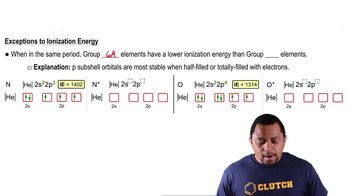Here are the essential concepts you must grasp in order to answer the question correctly.
Chemical Formulas
Chemical formulas represent the composition of a compound, indicating the types and numbers of atoms present. They are essential for understanding the molecular structure and stoichiometry of substances. For example, H2O denotes two hydrogen atoms and one oxygen atom, illustrating the ratio of elements in water.
Recommended video:
Oxidation States
Oxidation states (or oxidation numbers) indicate the degree of oxidation of an atom in a compound, reflecting its electron loss or gain. They are crucial for determining how elements interact in chemical reactions. For instance, in selenous acid (H2SeO3), selenium typically has an oxidation state of +4, which helps in understanding its reactivity.
Recommended video:
Group 6A Elements
Group 6A elements, also known as the chalcogens, include oxygen, sulfur, selenium, and tellurium. These elements commonly exhibit multiple oxidation states, influencing their chemical behavior and the types of compounds they form. Understanding their typical oxidation states aids in predicting the properties of compounds like hydrogen telluride (H2Te), where tellurium usually has an oxidation state of -2.
Recommended video:
Group 6A vs. Group 5A Elements





